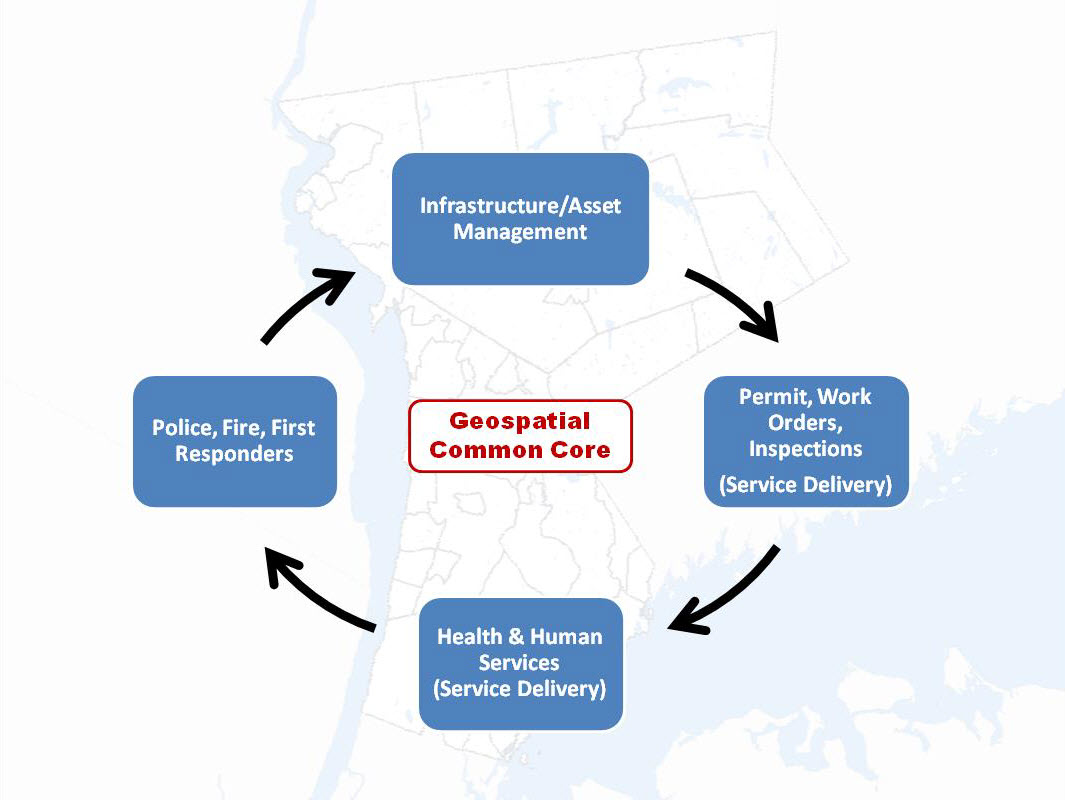I’ve been going back and forth with David Bubniak for several months on doing a piece on his geospatial work and efforts with the Southern Tier Central Regional Planning and Development Board (STC) where he has worked for over a decade. Covering three counties – Chemung, Schuyler, and Steuben – David’s GIS work with STC covers many program areas. A lifelong Southern Tier resident, he and his wife and their two sons live in Waverly, New York. David can contacted at gisstc@stny.rr.com.
eSpatiallynewyork: How long have you been with Southern Tier Central Regional Planning and Development Board (STC)?
Bubniak: I started at STC in 2005 and worked here for a year. I left and went to work for James Sewall in the Elmira office (formally Weiler Mapping). I then returned to STC in 2008 and have been here since. Prior to STC, I worked for the Chemung County Metropolitan Planning Office (MPO) in the early 90’s as a transportation GIS analyst. I then became the General Manager of Chemung County Transit. I then went back to doing GIS in the Northern Tier of Pennsylvania for Northern Tier Regional Planning. A good friend of mine is a surveyor and I worked with him on the side periodically over the years doing property surveys, deed research and construction layouts. Those experiences have helped me significantly over the years understanding how to assist people with GIS. I am the only designated GIS person in STC office though we do have planners that use it often.
eSpatiallynewyork: When did you start doing GIS work?
Bubniak: I started using GIS in 1993. I attended Mansfield University and graduated with a Geography degree with an emphasis in Planning. We used Atlas GIS for projects. I worked part time at the Chemung County Planning department right after I graduated in December 1994. My first project was mapping senior citizen migration from rural areas back into the City of Elmira for the Department of Aging. When I started at the Executive Transportation Committee for Chemung County (Chemung County MPO) in 1995 I used Unix based pcARC/INFO and AutoCad. I taught myself how to use both just by studying the manuals and using them for projects. I then started to use ArcView when it was released.
eSpatiallynewyork: What GIS products do you now use/promote?
Bubniak: I use both web and desktop applications. I use ArcGIS server as well as ArcGIS online for my web apps. I do promote both web and desktop apps. I have people using ArcView, ArcReader and ArcGIS Explorer. I have the Elmira Water Board using ArcGIS desktop with several departments accessing data over their network using ArcGIS Explorer (desktop). The Chemung County Stormwater Coalition uses a combination of ArcGIS online, local data, and data through ArcGIS server.
eSpatiallynewyork: What agencies/organizations do you work with most closely?
Bubniak: I do a lot of work for Chemung County departments and towns. I do get involved with the state from time to time. I function sort of as the GIS coordinator for Chemung County but not on formal basis. I work with the Stormwater Coalition, public works, Elmira Water Board, Real Property. I do work and assist several of the bigger towns in the county.
eSpatiallynewyork: Tell us about the “Southern Tier Central Mapping Application for Local Governments”
Bubniak: I have four basic parcel viewers. I have one for each county then one for the whole region. They all run the same data from a SQL database. Chemung and Schuyler Counties connect their county sites to their SDG Imagemate Online application. I have a Chemung County site tailored to soil and water, Public works and local code officials. Many county departments and officials use it for their GIS. I have a bunch of project specific web apps I built using ArcGIS for Flash and Silverlight including one for the Keuka Lake Watershed, a planning tool, and the Susquehanna-Chemung Action Plan. Those apps utilize other public services and data to cover the whole area. It really depends on the application and the need.
eSpatiallynewyork: In your capacity with STC, what professions do you work with the most on a day-to-day basis?
Bubniak: In addition to my daily responsibilities with TC, I work with several other (government, county, local governments, nonprofits, what?) disciplines including engineering, public works, planning/economic development, transportation, code enforcement and emergency services. In many respects and functions I serve as a GIS consultant (though not paid as one) to many organizations and governments across the three county region.
eSpatiallynewyork: Making maps anymore or is everything online now?
Bubniak: Mostly everything has gone online, though I still make maps from time to time. Well designed hard copy maps are always still needed for meetings and discussions. There is no substitute.
eSpatiallynewyork: From your perspective and experience in the Southern Tier, do you think decision makers and elected officials value GIS technology as a necessity or a “nice to have”?
Bubniak: For many years it was a “nice to have” and called a cool technology toy. Though more recently the culture and understanding of geospatial technology has changed within government and among elected officials to considering it much more as a “necessary” tool.
eSpatiallynewyork: Assuming money and administrative support were in place, what are a couple cost effective (and needed) geospatial applications which you feel STC could develop and available for the three county area?
I would like to have an application or applications similar to how the Town of Southampton, NY is making GIS services available on their website. They have a fee-based viewer (ePortal). for Land Manger GIS that was presented at the last New York State GIS Conference.
eSpatiallynewyork: So what’s next? What are you working on now?
Bubniak: Chemung County has just purchased an ELA license from ESRI. I am going to be designing, building multi-user databases and setting up applications for the county. We are going to be implementing a true enterprise system and get away from our current departmentalized GIS systems.
I am currently working on an application to allow Elmira City Council members to report issues they want resolved. This will be done on tablets and cut out a huge amount of paper work and will bring in a geospatial component at the same time.
Eventually we plan on getting social services involved. Once we get this off the ground and get things going we are going to look how to improve services in this area of government. While at Sewall we designed a web application for social services to locate day cares, employers, transit routes and client locations which I believe has potential for regional and county governments.
eSpatiallynewyork: So what are you doing when you are not working?
Bubniak: For many years I competed in power lifting but hurt my shoulder and don’t participate anymore. I enjoy the outdoors and hunt. We bought a starter home many years ago and since then I’ve completely redone the house doing all of the plumbing, electrical, drywall, flooring, etc., myself. It’s a great location on a dead end road and we own 40 acres.
Both of our boys – ages 9 and 14 – are involved in travel sports (baseball, track/cross country, Tae Kwon Do) so following them around to games and practices is one of our main “hobbies” now – which is all worth it.
Like this:
Like Loading...
 The CEDRA Corporation offers GIS based software for mapping, civil engineering design and modeling, surveying and database maintenance applications. CEDRA’s AVseriesTM suite of software operates directly within Esri’s GIS software (ArcGIS® 9.x and 10.x), thus eliminating the need to switch back and forth between various software packages. CEDRA software is developed entirely in-house and marketed worldwide to public works agencies, tax assessors, utilities, municipalities and private sector companies.
The CEDRA Corporation offers GIS based software for mapping, civil engineering design and modeling, surveying and database maintenance applications. CEDRA’s AVseriesTM suite of software operates directly within Esri’s GIS software (ArcGIS® 9.x and 10.x), thus eliminating the need to switch back and forth between various software packages. CEDRA software is developed entirely in-house and marketed worldwide to public works agencies, tax assessors, utilities, municipalities and private sector companies.
